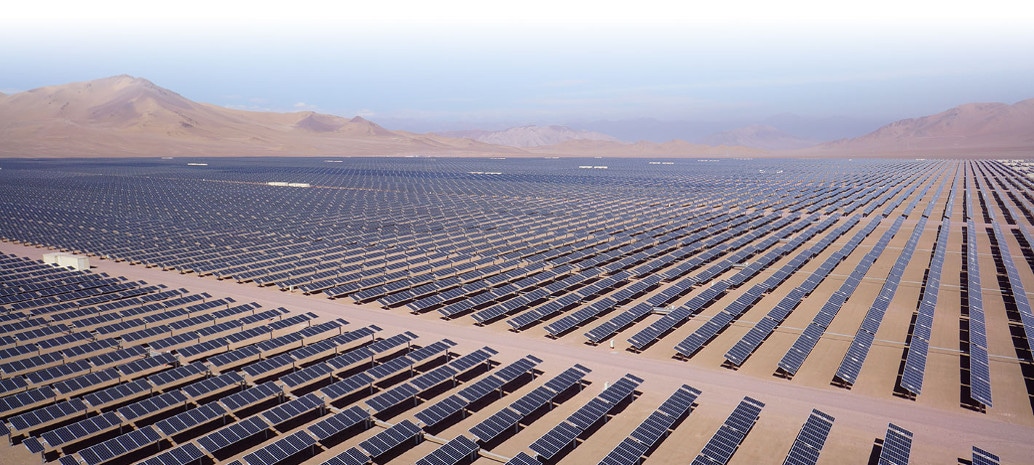The United States has had a strong presence in Latin America since the 19th century, when under the “Monroe Doctrine” the nation made it official policy to intervene in the affairs of its southern neighbors.
And while this intervention has not always been welcome by said nations, in the last decade the form of assistance took a decidedly benevolent turn. Starting in 2012 U.S. government agencies began financing the construction of the first very large solar plants in Chile, and in the process kick-started the region’s utility-scale solar market.
The principal actor in this was the Overseas Private Investment Corporation (OPIC), which under former U.S. President Barack Obama loaned $887 million to build five large solar projects and one run-of-rive hydro plant in Chile in 2013 and 2014.
However, now these plants are having difficulty paying back the loans, which has spurred an audit by OPIC’s Office of the Inspector General. And while this audit began last year, it was first reported yesterday by Reuters. Three of the five plants which received loans – the Salvador, Luz del Norte and San Andrés – are restructuring their debts.
Both Etrion, the majority owner of the Salvador plant, and First Solar, which owns Luz del Norte, have reached restructuring agreements with OPIC. Etrion is postponing debt payments for one year, and First Solar has extended the maturity of its loan to 2037. It is unclear what stage the restructuring of the San Andrés loan is in.
At the core of the problem is a risky system of selling the power. American developers such as SunEdison, SunPower and First Solar had joined Spanish companies in flocking to Northern Chile, due to the excellent solar radiation and the possibility of good returns due to high wholesale prices for electricity at the Northern end of Chile’s Central Grid (SIC).
Two of the plants which are restructuring, the San Andrés and the Salvador, were built as merchant plants, meaning that they sell at least half the power they generate directly on the spot market. And while merchant power is an established business model in the conventional power industry, pv magazine staff is only aware of five solar plants that have used this model to date, including San Andrés and Salvador.
Selling power on the spot market can be much more lucrative in the short run than selling power under fixed-price power contracts. It also involves considerable risk. And as more projects have been built in Northern Chile, they have depressed wholesale power prices in the region, and in some locations prices have fallen to zero during the period of solar production during the day.
It is clear that this is having an impact on the Salvador plant. In its fourth quarter 2016 results, Etrion wrote down the value of the Salvador plant by $76 million, citing a “sharp decline” outlook for long-term power prices in the Chilean market.
First Solar’s Luz del Norte is connected to a node which is reporting recurring zero prices during the day. This situation could be relieved with additional transmission, which is planned for the region but is late in coming online.
And while OPIC has traditionally returned a positive balance for U.S. taxpayers, the loans to these plants may be an exception. The Luz del Norte credit agreement alone has an outstanding balance of $181 million, and according to Reuters the agency could lose up to $240 million. OPIC has told Reuters that it expects to recover the full amount, but notes that timelines for repayment have been postponed.
The U.S. government’s concern does not appear to stop at the potential loss of dollars. The Inspector General is not only looking at these individual loans, but also the “factors OPIC used to assess and approve its energy projects in Chile”.
This could end up being a political football for the Trump Administration, which is both hostile to renewable energy and fond of laying blame on the former Obama Administration. But while much of President Trump’s accusations have been baseless, in the case of these loans real money is at risk.
If the Trump Administration and Congressional Republicans decide to take political advantage of the investigation, it may follow a pattern established in the witch hunt conducted against the DOE loan guarantee program in 2010, following the failure of loan guarantee recipient Solyndra. In both investigations by a congressional committee and in the press, the losses of Solyndra and other companies were scrutinized and the program declared a disaster, while the government’s profit on the overall program was ignored.
This content is protected by copyright and may not be reused. If you want to cooperate with us and would like to reuse some of our content, please contact: editors@pv-magazine.com.









By submitting this form you agree to pv magazine using your data for the purposes of publishing your comment.
Your personal data will only be disclosed or otherwise transmitted to third parties for the purposes of spam filtering or if this is necessary for technical maintenance of the website. Any other transfer to third parties will not take place unless this is justified on the basis of applicable data protection regulations or if pv magazine is legally obliged to do so.
You may revoke this consent at any time with effect for the future, in which case your personal data will be deleted immediately. Otherwise, your data will be deleted if pv magazine has processed your request or the purpose of data storage is fulfilled.
Further information on data privacy can be found in our Data Protection Policy.